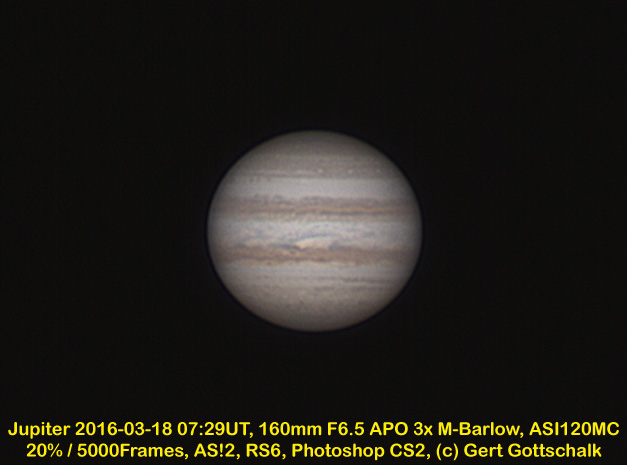Images taken with 5inch or 6inch APO refractor or 12inch CDK
Recording with DMK41 or ZWO120MC. Processing in AstroStakkert!2, Registax 6 and Photoshop CS2.
2016-08-01 03:50. A new month begins and this will bring the Mars campaign to an end. Just when darkness begins Mars is already at maximum height in the South. From then on it's only gettng lower and the seeing conditions get worse. I ran a 1:40hr sequence of AVI recordings with the USB camera to make one last time-lapse of Mars rotation. here are 3 images showing the rotation of Mars.
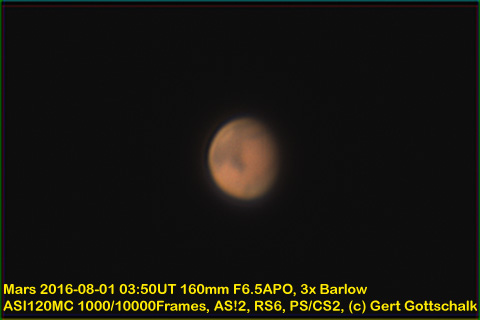
2016-08-01 04:18UT
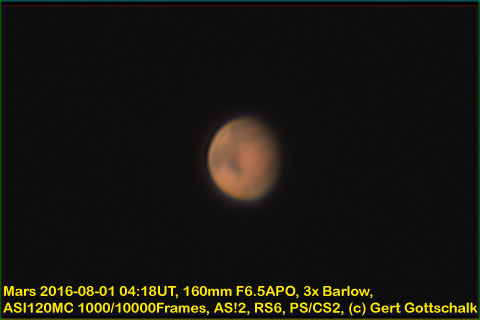
2016-08-01 04:38UT
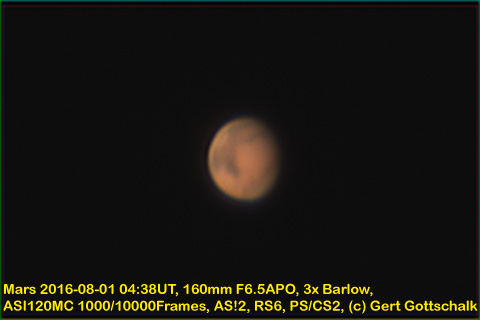
And finally the time-lapse animation covering about 03:31UT to 05:10UT.
2016-07-25 04:35UT. Just a small swing away was Saturn and using the same imaging train I captured this image. It is nice to compare the apparent sizes of the Planets in the images.
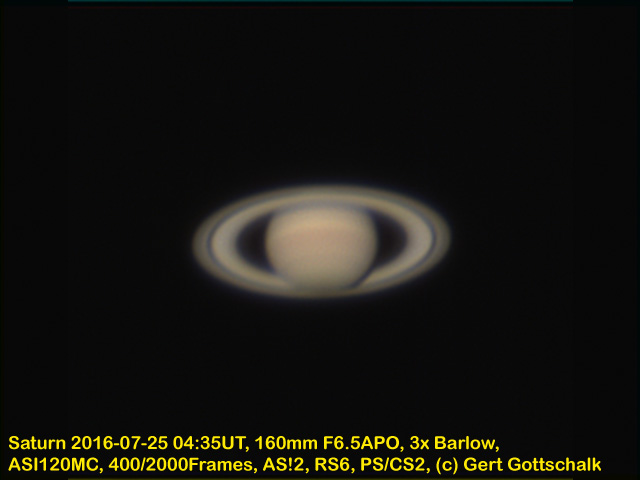
2016-07-25 04:20UT. The seeing was average but Mars was as high in the South as possible so I wanted to take an image. Since the last image a noticeable decrease in the illuminated phase is visible. Also Mars has gotten smaller as it moves away from the Earth.
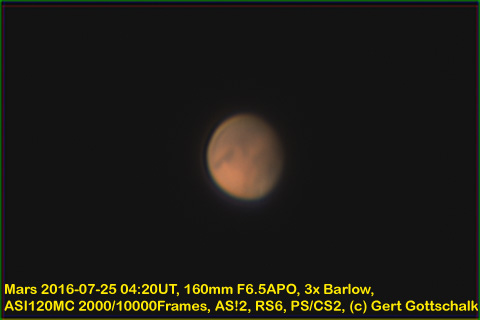
2016-06-13 05:48UT. Tonight the seeing war average and Mars even at culmination in the South was badly distrubesd by the air turbulence. Still a useable image was possible.
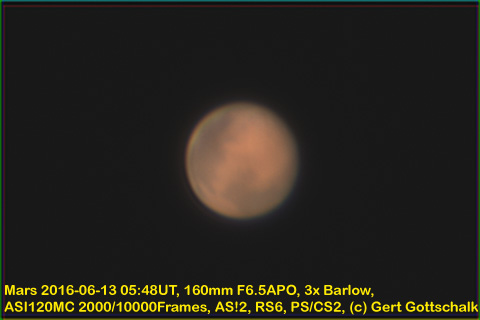
2016-05-30 05:27-08:00UT A total of 38 recordings of Mars are put into a time-lapse video. Seeing is somewhat variable during the two and a half hours covered by the time-lapse
2016-05-27 07:32UT. The same night I also got much better data for Saturn. We see a hint of the C-ring on the inside of A and B.
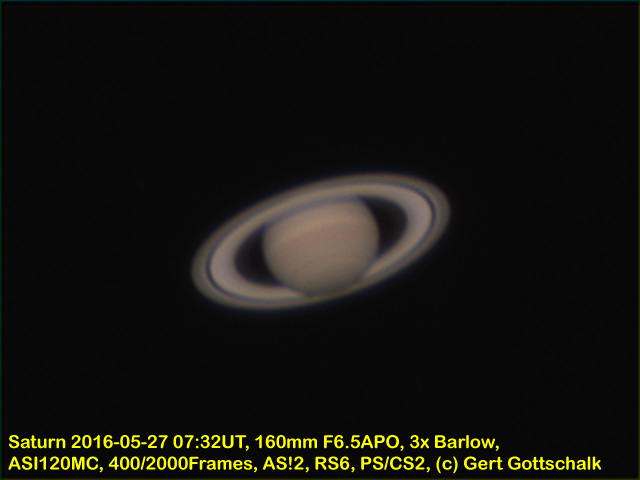
2016-05-27 06:52UT. Finally later in the night the seeing improve quite a bit and we got very good detail on Mars even though it was so low in the sky. The dark feature near the right limb is Syrtis Major and the big orange region near center is Aetheria.
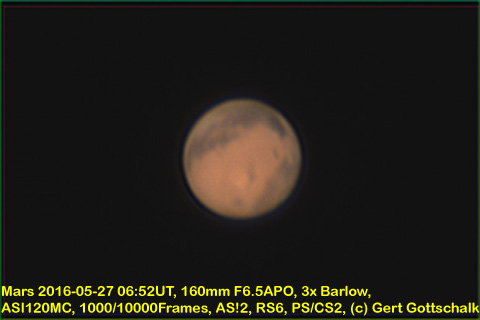
2016-05-27 03:50UT. Early in the evening the seeing was not good. It was going to improve later. The Res Spot is not visible, but Ganymede is at right.
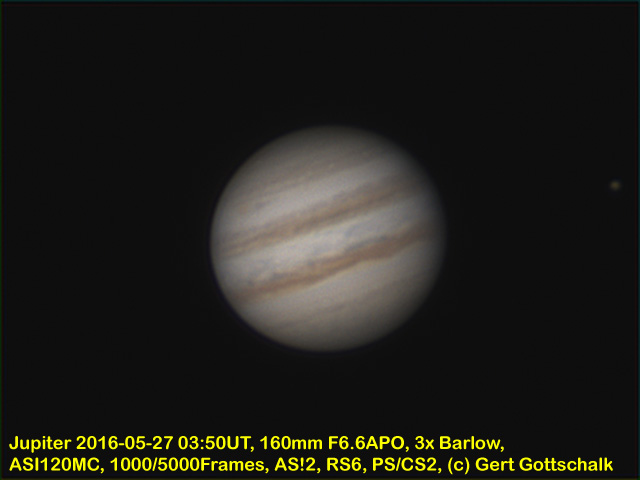
From multiple images I made a short timelaps video showing the rotation of Jupiter and the movement of the moon Ganymede.
2016-05-19 07:24UT. The first image of Saturn in this observing campaign. The seeing conditions were the same and again the image is quite blurry.
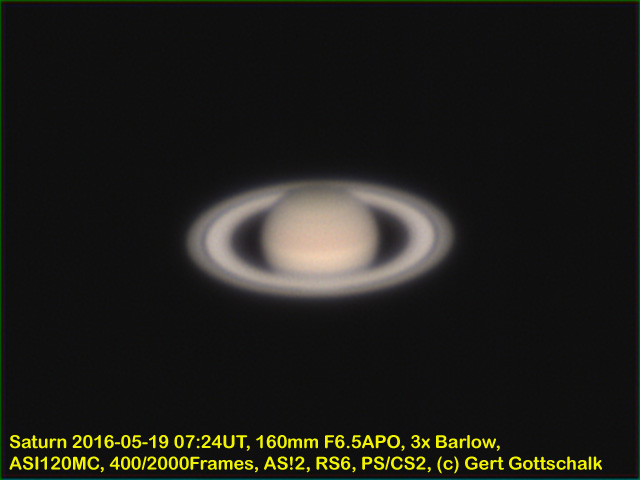
2016-05-19 06:59. The same night I got the first observation of Mars. As Mars is much lower near the horizon the effects of seeing are even worse and the image is very blurry.
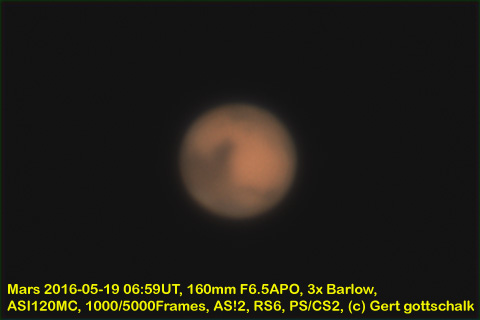
2016-05-19 05:04UT. Same as two days earlier the seeing was not good. It is interesting to notice that the rotation angle of Jupiter is almost the same as the prev. image. So it is nice to check if cloud formations have moved in between. But I fear the images are too blurry to allow that.
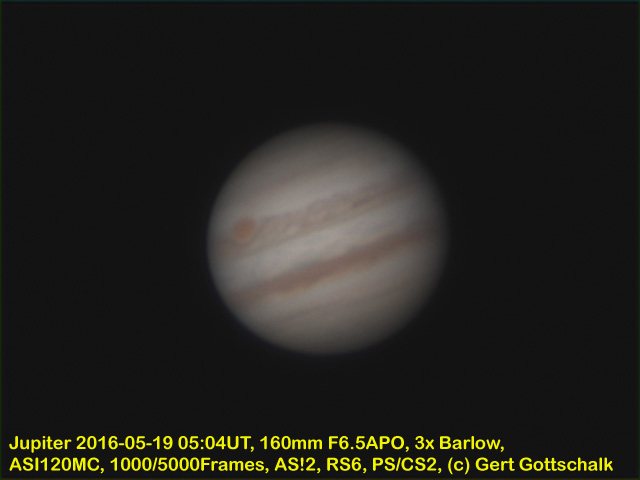
2016-05-17 03:44UT. We did not have good seeing this evening. So there is not as much detail on Jupiter. It would have been nice as there was a favorable visibility of the Great Red Spot.
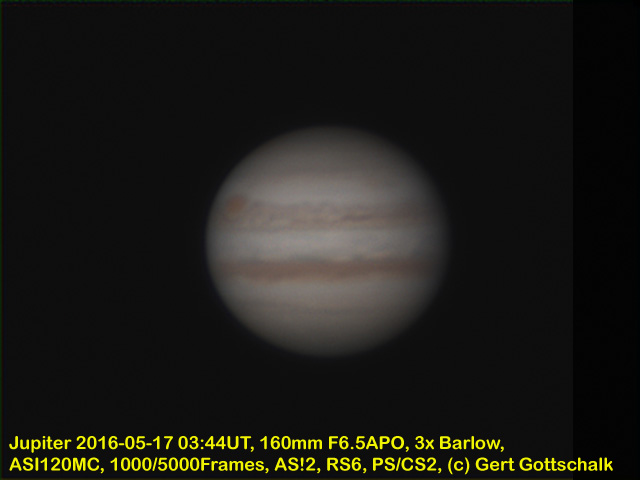
2016-04-17 I'm changing the page content to cover all planets.
2016-04-17 06:06UT. This Saturday I followed Jupiter the whole evening waiting for the Red Spot to appear. For about 2 1/2 hrs I recorded AVIs to process into a time lapse animation. Only at the end the Red Spot showed up. There were some seeing changes in the middle of the sequence. But some images near the beginning and the end showed good detail. I sued the 3x MeadeBarlow again this time but added a 1" extension to it further upscaling the image. This gave additional image scale and seems to have resulted in better resolution as well.
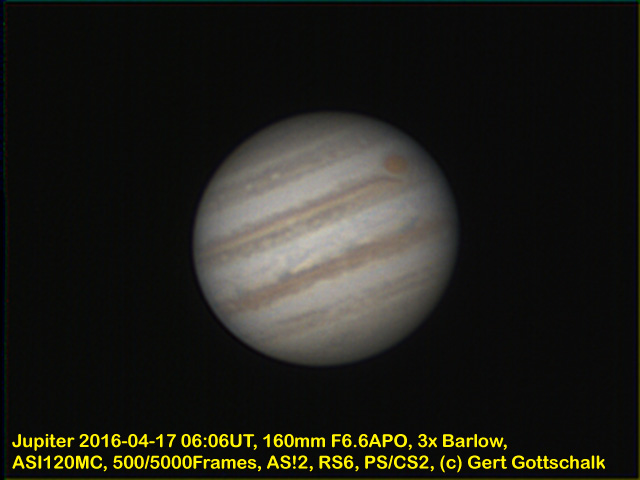
2016-04-17 03:52UT to 06:37UT Images were recorded every 3minutes. (about 90sec AVI recording and 90sec pause)
2016-04-17 03:52UT to 06:37UT I want to show the sequence of processing. We start with the raw-AVI as we receive it from the camera. It is a color camera but we have turned out the de-Beyering of the pixels so we see a gray-scale image. This saves transmission bandwidth during live capture as instead of 3 bytes for RGB we only have to send 1 byte per pixel. We then use software during processing to de-Beyer the video. The video is analyzed for the sharpest 20% frames and then those are stacked. The stack is then sharpened using another software package. We get a single sharpened image. If we do this above procedure for many recordings of the planet and then put the sharpened frames into a sequence we get a time lapse animation of the planet rotating.
2016-03-31 05:54UT. Finally a chance for a moon shadow transit. Seeing was only average. This time Ganymede (lower left) is casting the shadow. Europa on the right. An hour or two later the Red Spot would have become visible, but fog rolled in and I had to close down.
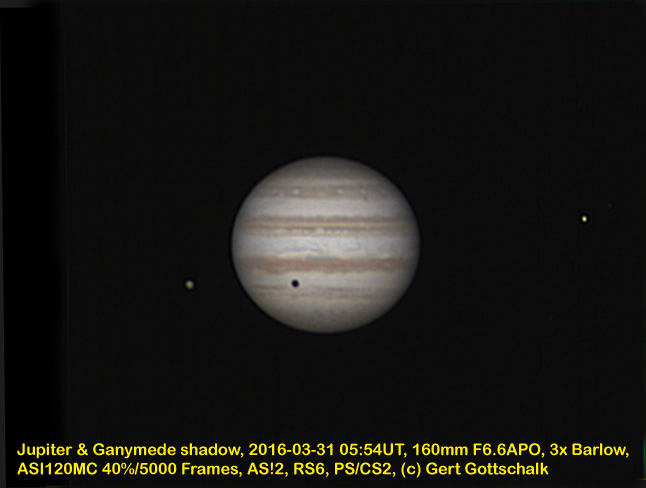
2016-03-31 05:54 - 06:11UT A series of frames was combined into a small time-lapse animation
2016-03-18 07:29UT A night with good seeing. even in the Laptop preview of the camera Jupiter was very steady. This time no moons or the Red Spot were visible.
